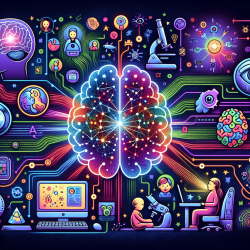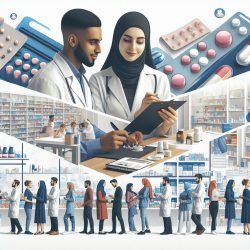Introduction
In the ever-evolving field of speech language pathology, integrating cutting-edge technology can significantly enhance therapeutic outcomes. The research article "Engineering and clinical use of artificial intelligence (AI) with machine learning and data science advancements: radiology leading the way for future" provides a compelling case for the application of AI and machine learning in clinical settings, particularly in radiology. This blog explores how these advancements can be translated into the realm of speech language pathology to improve outcomes for children.
The Role of AI in Radiology
Radiology has been at the forefront of integrating AI to enhance diagnostic accuracy and efficiency. AI algorithms, particularly deep learning (DL) models, have demonstrated superior performance in interpreting complex imaging data, reducing error rates significantly. For instance, DL systems have shown remarkable capabilities in identifying pneumonia on imaging scans, outperforming traditional methods.
Translating AI Advancements to Speech Language Pathology
While radiology deals with visual data, speech language pathology involves auditory and linguistic data. However, the underlying principles of AI application remain similar. Here are some ways AI can be leveraged in speech language pathology:
- Automated Speech Analysis: AI can be used to analyze speech patterns, identify anomalies, and provide real-time feedback. This can be particularly useful in diagnosing speech disorders and tailoring interventions.
- Data-Driven Interventions: Machine learning algorithms can analyze large datasets of speech therapy sessions to identify effective intervention strategies, thus personalizing therapy for each child.
- Enhanced Teletherapy: AI can optimize online therapy platforms like TinyEYE by providing interactive and engaging therapy sessions, thus improving accessibility and outcomes for children in remote areas.
Encouraging Further Research
The integration of AI in speech language pathology is still in its nascent stages. Practitioners are encouraged to explore and contribute to research in this area. By collaborating with data scientists and engineers, speech language pathologists can develop innovative solutions that leverage AI to enhance therapeutic outcomes.
Conclusion
The potential of AI in transforming speech language pathology is immense. By drawing insights from radiology's advancements in AI, practitioners can improve diagnostic accuracy, personalize interventions, and ultimately enhance the quality of life for children with speech and language disorders. As we continue to explore this exciting frontier, the collaboration between technology and therapy will pave the way for groundbreaking developments in the field.
To read the original research paper, please follow this link: Engineering and clinical use of artificial intelligence (AI) with machine learning and data science advancements: radiology leading the way for future.










